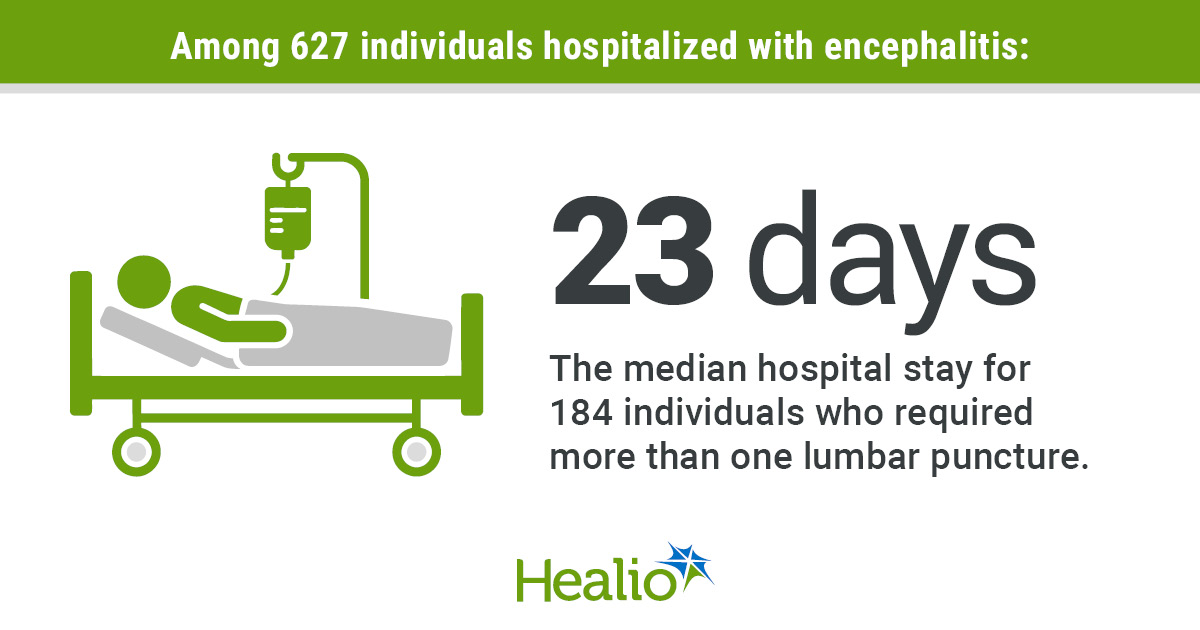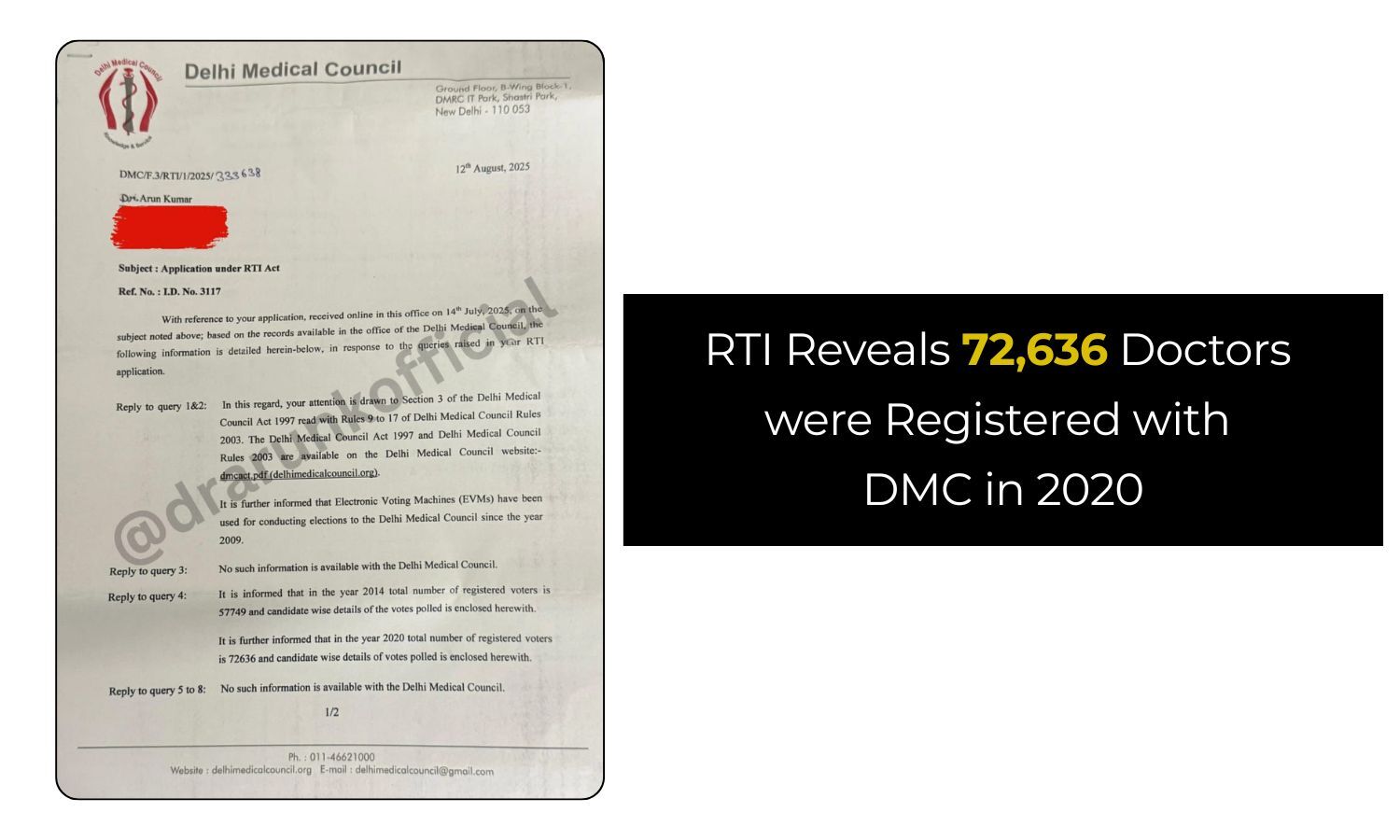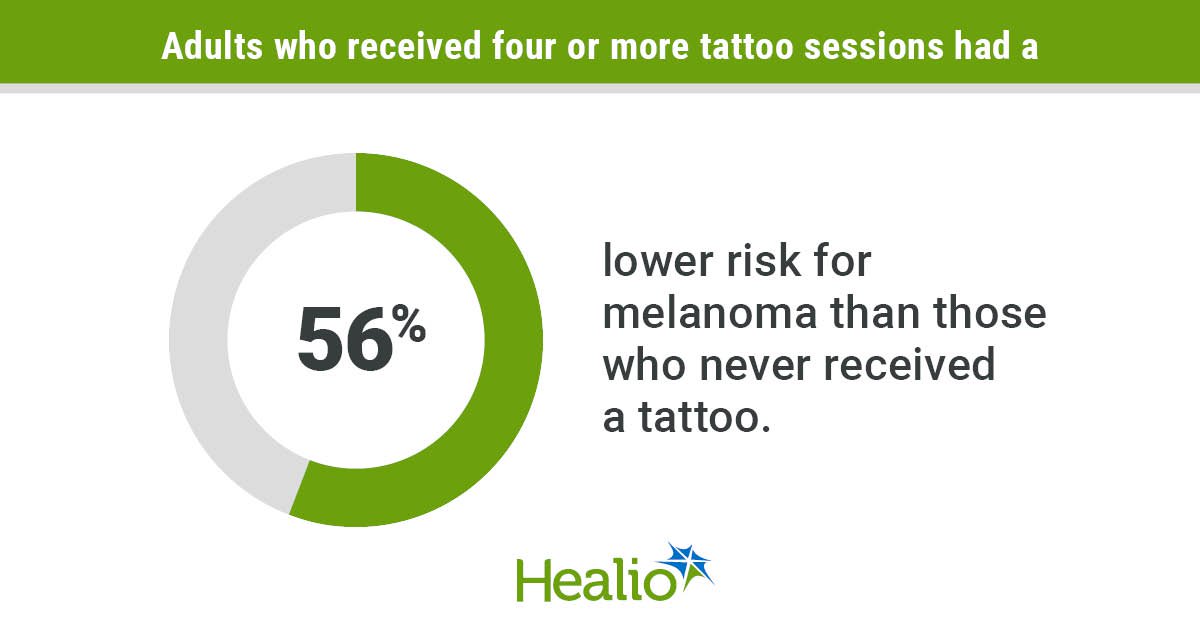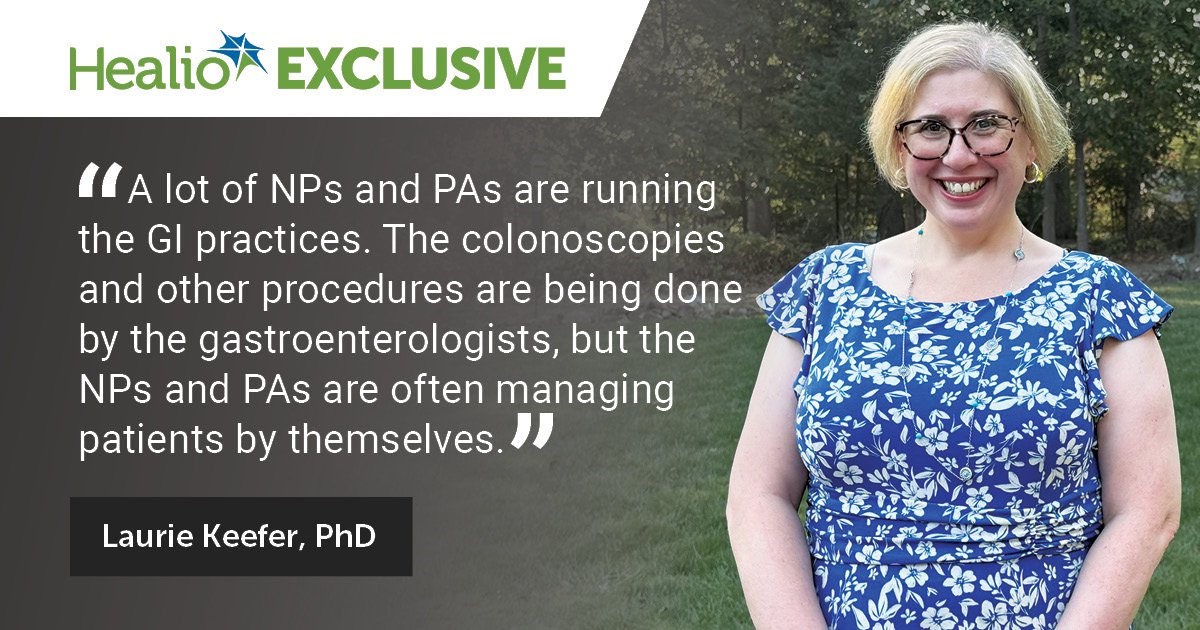October 07, 2025
2 min read
Key takeaways:
- Roughly 30% of hospital admissions for encephalitis required repeat lumbar punctures.
- Diagnostic uncertainty is a primary driver of repeat LPs for those with encephalitis.
BALTIMORE — Patients with encephalitis admitted to hospital tend to have more lumbar punctures as a result of disease severity and subsequently longer hospital stays compared with those who did not have repeat lumbar punctures, according to a poster.
“We don’’t know too much about follow-up lumbar punctures in encephalitis patients,” Jordan Benderoth, BA, a graduate student in the department of neurology at Johns Hopkins University School of Medicine, told Healio.

Data were derived from Benderoth J, et al. Characterizing follow-up lumbar punctures in encephalitis patients. Presented at: American Neurologic Association annual meeting; Sept. 13-16, 2025; Baltimore.
These uncertainties include who gets these procedures, what the data shows over time, and their cerebrospinal fluid profiles, Benderoth said.
In addition, she noted, data from a prior study showed that 25.3% of patients with encephalitis tested negative for pleocytosis on an initial lumbar puncture (LP). As a result, lack of pleocytosis should not rule out a diagnosis of the serious neurologic condition.
Since pleocytosis within cerebrospinal fluid (CSF) is an indicator of inflammatory activity within the central nervous system, Benderoth and colleagues sought to determine clinical characteristics of these patients as well as the impact of encephalitis for those who undergo repeated LPs during follow-up examinations.
Their retrospective cohort study culled data from two Houston-based hospitals from 2005 to 2023 as well as two Johns Hopkins-affiliated institutions between 2006 and 2022, yielding 627 adults.
Data collection for all participants included demographics and clinical outcomes, CSF analysis over the duration of LPs, reasons for follow-up visits, as well as clinical information on those who developed pleocytosis with repeat LPs.
According to results, 184 individuals (29.4%) underwent a repeat LP during their acute admission with median time to the second LP of 6 days. Benderon said this percentage was “a lot larger” than she and her colleagues expected.
Of those 184, the median hospital stay was 23 days, with 55.2% requiring an ICU admission, 83.6% demonstrating abnormal EEGs, 33.7% diagnosed with the infectious subtype of encephalitis and 22.8% with the autoimmune version.
Conversely, those with no repeat LPs endured a median hospital stay of 9 days, 34.5% had to be admitted to the ICU, 74.4% had abnormal EEGs, 48.1% were diagnosed with an infectious subtype and 16% with the autoimmune version.
With respect to CSF profiles from the time of admission to 28 days, the white blood cell (WBC) count in the overall study population decreased. Individuals in the autoimmune subgroup (n = 42) saw their WBCs stabilize while those in the infectious subgroup (n = 62) saw their WBCs decrease.
Among those who underwent at least one follow-up LP, the chief reason within both the 0- to 7-day window, as well as that of 7 days and beyond, was uncertainty of diagnosis. For the former, clinical deterioration or lack of treatment response was the next most cited reason, while in the latter, symptom worsening/treatment unresponsiveness and closer monitoring of treatment response were secondary concerns.
The researchers additionally reported that among the 169 individuals without pleocytosis upon their initial LP, 39 (23%) underwent a repeat LP, whereby 51.2% subsequently developed pleocytosis.
From a select subpairing of 19 individuals with pleocytosis, seven had the infectious subtype of encephalitis, six had the autoimmune subtype and six more had an unclear diagnosis.
“We did see that the autoimmune group is more likely to undergo a repeat lumbar puncture while the infectious group is more likely to not have a repeat lumbar puncture,” Benderoth said. “And if you look … at the changes in CSF profile over time, so what we see is that the infectious group, they’re usually getting antimicrobial treatment right off the bat.”
For more information:
Jordan Benderoth, BA, can be reached at neurology@healio.com.










